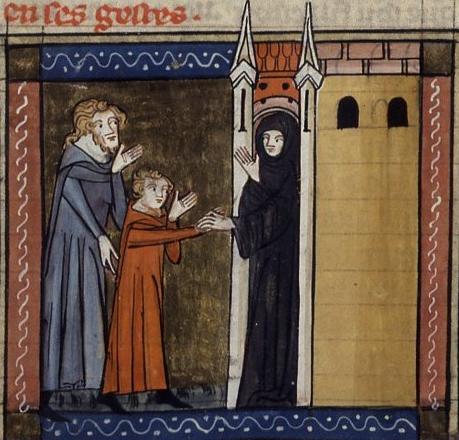
WHO'S READY FOR A LITTLE BIT OF 15TH CENTURY ASTROLOGY? We're going to call out your sign, 15th century-style.
Anatomical Zodiac by the Limbourg Brothers from Très Riches Heures du Duc de Berry, a 15th century book of hours, circa 1412-1416, Musée Condé.
Anatomical Zodiac by the Limbourg Brothers from Très Riches Heures du Duc de Berry, a 15th century book of hours, circa 1412-1416, Musée Condé.

In this illustration, the 12 signs of the zodiac are depicted around the edge of a vulva shape. Inside are two androgynous figures with the signs corresponding with parts of the body.
So if you're an Aries, you're the head. If you're Capricorn, you're knees. If you're Scorpio, you're crotch.
We were born on 20th March, which makes us beneath the feet. Oof.
We were born on 20th March, which makes us beneath the feet. Oof.
There's more! The text in the corners offers more information about the signs, sorting them into four temperaments (choleric, melancholic, sanguine and phlegmatic), four complexions (hot, cold, wet and dry), masculinity or femininity, and four compass points.
According to the manuscript, Aries, Leo and Sagittarius are warm and dry, choleric, masculine and Eastern.
Your 15th century horoscope if you're Taurus, Virgo or Capricorn is you're cold and dry, melancholy, feminine and Western.
If you're Gemini, Aquarius or Libra, you're hot and humid, sanguine, masculine and Southern.
And finally, Cancer, Scorpio and Pisces are cold and wet, phlegmatic, feminine and Northern.
• • •
Missing some Tweet in this thread? You can try to
force a refresh








